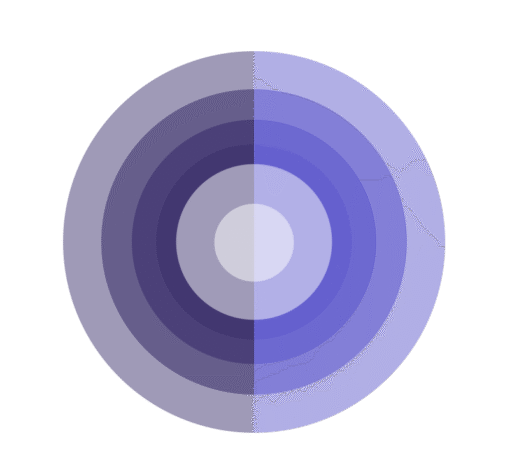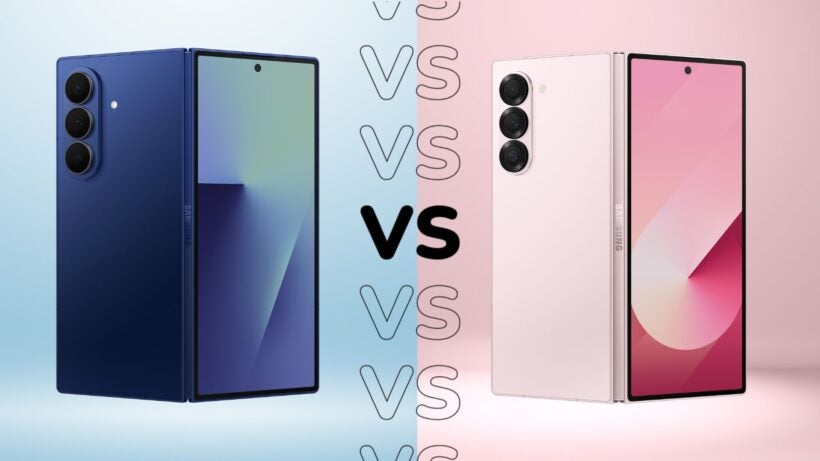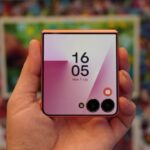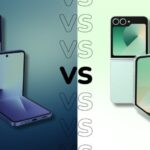
Samsung has unveiled the Galaxy Z Fold 7 alongside the Z Flip 7 at its Unpacked event – but what’s the difference between it and last year’s Galaxy Z Fold 6?
While some previous Z Fold upgrades were best described as iterative, that’s certainly not the case this year. The Galaxy Z Fold 7 is not only significantly thinner and lighter than last year’s Galaxy Z Fold 6, but it also offers a bevvy of other hardware upgrades that better allow it to compete with the foldable competition.
The question is, should you upgrade? While we’ve gone hands-on with the new Galaxy Z Fold 7, we’re not quite ready to deliver our final thoughts just yet. That said, here are five key differences between it and the Galaxy Z Fold 6 based on specs and our initial impressions.
Pricing and availability
The Samsung Galaxy Z Fold 7 is available to pre-order right now ahead of release on 25 July 2025. It’s set to come in at the same £1,799 as its predecessor in the UK, though it has increased by $100 in the US at $1,999.
SQUIRREL_PLAYLIST_10207783
That said, the Galaxy Z Fold 6, which was released in mid-2024, can now be found for much less than its £1,799/$1,899 RRP, and we expect that to continue as retailers shift remaining stock with the release of the upgraded model.
SQUIRREL_PLAYLIST_10207319
The Galaxy Z Fold 7 is thinner and lighter
The Samsung Galaxy Z Fold 7 is significantly thinner and lighter than its predecessor, which looks comparatively thick and chunky next to the latest model.
More specifically, the Z Fold 7 measures in at 4.2mm unfolded and 8.9mm folded, compared to 5.6mm and 12.1mm from the Z Fold 6, and it’s 24g lighter too.



Samsung Galaxy Z Fold 6
In fact, with dimensions this slim, the Z Fold 7 can go toe-to-toe with some of the slimmest foldables around including the Oppo Find N5, Honor Magic V3 and even the upcoming Magic V5. It’s an impressive year-on-year jump that should make all the difference in day-to-day use. It’s just so much nicer to hold and use, even folded, as a result.
And, despite being thinner and lighter than last year’s foldable, it’s just as durable with the same Armor Aluminium frame and IP48 dust and water resistance. In fact, with Gorilla Glass Victus Ceramic 2 protection on the cover screen, it should fare slightly better against scratches and impacts.

Much of the new feel is down, of course, to a slimmer chassis, but the Armor FlexHinge system has also been redesigned and shrunk down to facilitate its new ultra-thin design. The new waterdrop-style hinge mechanism also has another massive benefit – but I’ll get to that in a second.
The Galaxy Z Fold 7 has bigger screens
The Galaxy Z Fold 7 isn’t just thinner and lighter than its predecessor – it also packs larger, and crucially, wider screens. The cover screen of Samsung’s book-style foldables has always been relatively thin and narrow, but Samsung has finally made strides to fixing that complaint with a new 6.5-inch 21:9 cover screen.



Samsung Galaxy Z Fold 6
It’s still a tall screen, but it should provide a more typical phone experience when you don’t need the expansive inner panel.
Unfold the phone and you’ll find an 8-inch foldable screen. This is bigger than that of the Z Fold 6, but what’s more impressive is the crease – or lack thereof.
The aforementioned redesigned hinge system provides a significantly reduced crease compared to the Z Fold 6; it’s still there, but unless you actively look for it, it’ll be barely noticeable. Compared to the relatively deep curvature of last year’s inner panel crease, it is a massive improvement.

Crucially, the cover and inner panels share the same screen tech, with both offering the same LPTO-enabled 120Hz refresh rate, 2600nit peak brightness and support for HDR10+ for a more consistent experience.
For comparison, the Galaxy Z Fold 6 features a tall 22:9 6.3-inch cover screen paired with a slightly smaller 7.6-inch inner panel, both of which have the same LTPO-enabled 120Hz refresh rate and 2600nit peak brightness.
The Galaxy Z Fold 7 has a more capable main camera
Samsung teased bringing the ‘Ultra’ experience to the Z Fold 7 ahead of its launch, and it wasn’t just talking about the design; it also features the same 200MP primary camera as the Galaxy S25 Ultra and S25 Edge.
Compared to the 50MP sensor present on the Z Fold 6, the new 200MP primary camera features a larger 1/1.3-inch sensor, offering improved 16-in-1 pixel binning technology to enhance overall detail and light capture. The latter should be further improved by a f/1.7 aperture, wider than the f/1.8 aperture of last year’s equivalent.



Samsung Galaxy Z Fold 6
Elsewhere, however, the camera experience is fairly consistent; both feature a 10MP 3x telephoto lens and a 12MP ultrawide, with twin 10MP selfie cameras on the cover and internal screens to boot. The Z Fold 7 has ditched the under-display nature of the internal selfie camera this year, however, with a regular cutout.
This might sound like a step backwards, but the UDC of the Z Fold 6 wasn’t great; you could easily spot where it was despite a layer of pixels on top, and it rendered the actual camera pretty useless. This way, you’ll at least get a decent 10MP internal camera for video calls and the like.
Both also allow for up to 8K@30fps video capture, but the Z Fold 7 can also record in 10-bit HDR for improved dynamic range and richness.
The Galaxy Z Fold 7 offers top-end processing power
The Samsung Galaxy Z Fold 7 should offer significant gains in the processing department with the use of the custom Snapdragon 8 Elite for Galaxy.
While we’ve not benchmarked it just yet, we’ve already seen the chipset – and the impressive performance that comes with it – from the Galaxy S25 collection. It’s largely down to the 8 Elite’s Orion CPU architecture, based on the laptop-level X Elite chipset, and it offers massive year-on-year gains across the board.



Samsung Galaxy Z Fold 6
That said, the Samsung Galaxy Z Fold 6 and its Snapdragon 8 Gen 3 is no slouch – it’ll still be able to perform most tasks without a hint of stuttering or lag. It’s just not quite as powerful as the 2025 equivalent.
Elsewhere, both phones ship with either 256GB, 512GB or 1TB of storage, with 12GB of RAM or a boosted 16GB if you opt for the 1TB model.
Both have the same battery and charge speeds
While the Galaxy Z Fold 7 is shaping up to be a big upgrade on the Z Fold 6, the battery and charging experience are surprisingly – and some might say disappointingly – familiar.
Despite the Z Fold 7 packing larger screens and a more powerful processor, it packs the same 4400mAh battery as the Z Fold 6, with the same 45W charging support to boot. Samsung claims that the improved efficiency of the chipset should still allow for all-day battery life, but we’ll have to test that for ourselves first.
Early verdict
It seems like the Galaxy Z Fold 7 is quite a substantial upgrade over the Galaxy Z Fold 6; it offers not only a much thinner and lighter build but bigger screens, a much better primary camera, better performance, more AI smarts and more – all for the same price as the Z Fold 6 was at launch.
That said, if you’re happy with what the Z Fold 6 offers, you should be able to find it at quite a discounted price now that the Fold 7 is available for pre-order.



